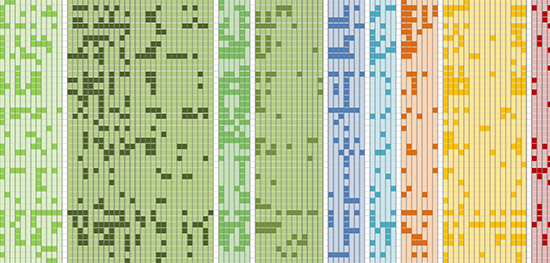
Visual representation of sustainable design strategies we employ at PAYETTE, ranging from the envelope to the landscape.
In July 2014, when the IECC 2012 goes into full effect, the current Stretch Code will be essentially equivalent to the new base energy code in terms of energy efficiency. The Green Communities Act requires that “Green Communities” set requirements to minimize life-cycle costs for new construction, which largely has been accomplished through the adoption of the Stretch Code by these municipalities.
The Department of Energy Resources is accepting comments regarding this issue until March 28. The USGBC MA Chapter has provided a letter of support, which you can send to the Commissioner, Mark Sylvia (stretchcode@state.ma.us). We support updating the Stretch Code and encourage you to share your feedback and provide comments.
As a building professional and resident of Massachusetts, I am writing to express my support for the adoption of the update to the Stretch Code
The Commonwealth should move in an expeditious manner in developing and adopting the updated Stretch Code. In July 2014, when the IECC 2012 goes into full effect, the current Stretch Code will be essentially equivalent to the new base energy code in terms of energy efficiency. The Green Communities Act requires that “Green Communities” set requirements to minimize life-cycle costs for new construction, which largely has been accomplished through the adoption of the Stretch Code by these municipalities. The delay in the adoption of an updated Stretch Code is causing confusion as to the status of Green Community designations, along with undue complexity for the design professionals of Massachusetts dealing with uncertainty as to future requirements in the Green Communities.
The adoption of the current Stretch Code has made Massachusetts a national leader in energy performance. The adoption of an updated Stretch Code will support the efforts of the Clean Energy and Climate Plan for 2020 (2010) which references the Stretch Code and identifies significant greenhouse gas (GHG) emissions savings associated with its adoption. The adoption of a Stretch Code will help to realize the 9.8% GHG reduction by 2020 that the Commonwealth has hoped to achieve from the building sector.
The Stretch code concept aligns with the USGBC and our efforts to transform the market using the LEED building rating system. We support efforts to continue raising the bar on energy efficiency in a constructive manner that will continue to help shift the market and our building stock towards a future goal of zero-net energy and positive energy buildings.
The Commonwealth should align the updated Stretch Code with the newly-finalized 2015 IECC. Since the Commonwealth is required to adopt the 2015 IECC within a year of its publication this spring, writing a Stretch Code that is incompatible with the 2015 IECC would necessitate another update as soon as next year. It is our hope that developing the Stretch Code in advance of the adoption of its concurrent base code would set a precedent for future code cycles, thereby eliminating the issue we are currently facing due to the delay in adopting an updated Stretch Code. We appreciate the Massachusetts Department of Energy Resources past leadership on the Stretch Code, and would like to support the swift adoption of an updated version.


